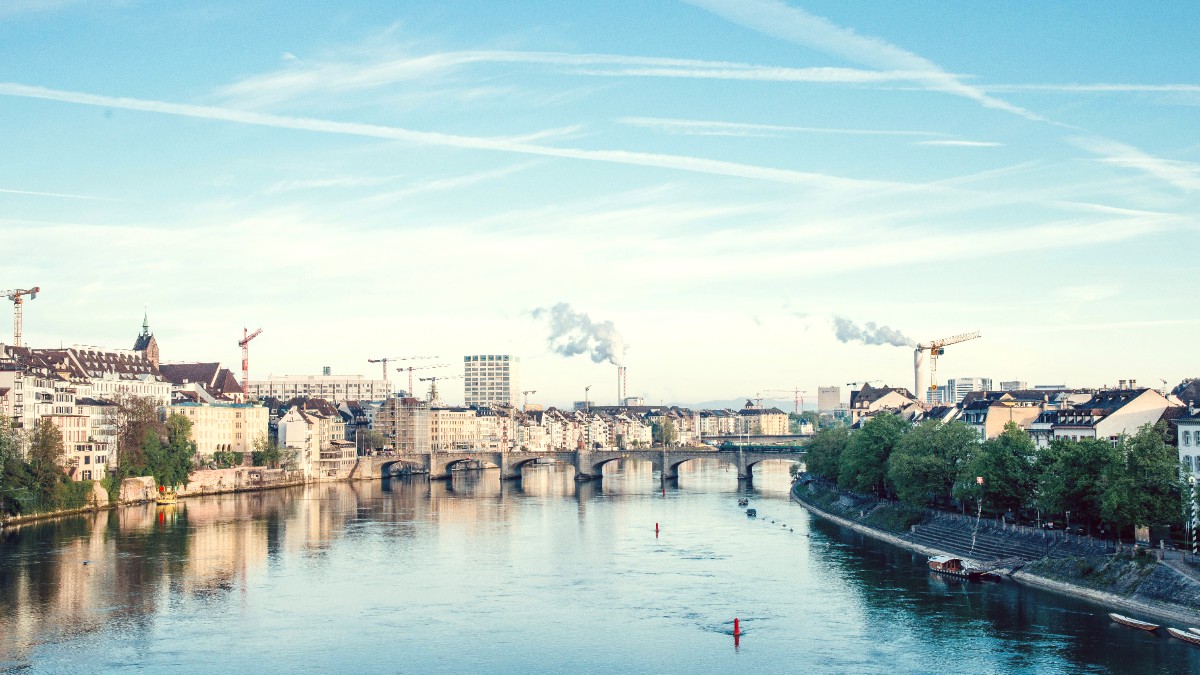
Northern Switzerland, Switzerland
A place where medieval spires touch the sky alongside contemporary art installations. The flowing waters of the Rhine connect historical trade routes with modern riverside living. Basel presents this unique picture, appealing to art lovers, history enthusiasts, and those seeking a cosmopolitan flair without the overwhelming crowds of larger metropolises.
The city’s identity is rooted in its past as a prosperous trade center and a symbol of humanism. Basel looks forward with dynamic energy.
Basel serves as a hub of innovation and a gateway to the diverse landscapes of the Black Forest in Germany and the Alsace region in France. A visit here promises more than sightseeing; it offers immersion in a city that values tradition while embracing progress.
Basel occupies an unique position, located at the point where the borders of Switzerland, France, and Germany converge. This geographic reality, known as the "Dreiländereck" (Three Countries Corner), shaped Basel's history, culture, and economy. The Rhine River flows through the heart of the city, dividing it into Grossbasel (Greater Basel) on the left bank and Kleinbasel (Little Basel) on the right. This river is the city's lifeblood, historically a trade route and today a spot for recreation and scenic beauty.
To the south and east lies the Swiss Jura mountain range, with rolling hills and forests. To the north, the German Black Forest extends with dense evergreen forests and valleys. To the west, the French Alsace region unfurls, famous for its wine route and half-timbered villages. Basel's proximity to three countries means cross-border travel is simple and common, with a blend of Swiss efficiency, German thoroughness, and French flair.
The meeting point of Swiss, French, and German borders.
The central waterway dividing the city and a popular summer gathering spot.
Rolling hills and forests south and east, ideal for hiking.
Dense forests and picturesque towns to the north.
Wine routes and half-timbered villages to the west.
Basel's location creates an unique blend in its local dialect, cuisine, and general atmosphere. The city's EuroAirport is trinational, serving Basel, Mulhouse (France), and Freiburg (Germany), demonstrating cross-border cooperation. Basel functions as an excellent base for exploring Central Europe.
Cross-border travel is simple and common for residents, impacting the city's unique charm.
The EuroAirport serves three countries, demonstrating the unique trinational cooperation and making Basel an international gateway.
Basel manages to feel both grand and intimate. Its compact size means you walk to many attractions, allowing a relaxed pace of discovery. The city maintains a high standard of living, seen in its well-maintained public spaces and service quality.
Basel has a long and layered history, stretching back to Roman times. The Roman settlement of Augusta Raurica, located a short distance east of modern Basel, was a thriving provincial capital, evidence of early human activity. This archaeological site offers a direct link to the area's ancient past.
During the Middle Ages, Basel grew into a prosperous mercantile city. It became a Free Imperial City of the Holy Roman Empire, granting considerable autonomy. The Basel Minster, with its distinctive red sandstone and colorful roof tiles, began in the 11th century, a symbol of the city's medieval power. One of Europe's oldest universities was established here in 1460, attracting scholars, artists, and reformers.
The Basel Minster is a testament to the city's medieval influence and architectural heritage.
Basel embraced Protestantism early, drawing humanists like Desiderius Erasmus.
In the 19th and 20th centuries, Basel became a chemical and pharmaceutical powerhouse.
Basel maintains its commitment to culture and art, investing in museums and cultural institutions. This dedication earned it the title of Switzerland's "cultural capital."
A compelling blend of tradition and modernity, efficiency and charm. High quality of life.
Over 40 museums, from fine art (Kunstmuseum Basel) to quirky kinetic sculptures (Museum Tinguely).
Hosts one of the world's leading art fairs, annually attracting global collectors and artists.
UNESCO-recognized carnival, three days of parades, music, and lantern displays, starting after Ash Wednesday. An immersive cultural experience.
Basel maintains an engaging calendar of events, markets, and cultural performances, creating a dynamic backdrop for your visit.
Basel presents visitors with a clean, safe, and culturally rich environment, a destination that both relaxes and stimulates.